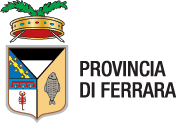De Chirico Giorgio
Two years later in Athens, his brother Andrea was born. Andrea adopted the pseudonym of Alberto Savinio in his work as a writer and musician.
During this time Giorgio, whose father always supported his passion for art, took his first drawing lessons with the Greek painter Mavrudis. And it was in Athens that De Chirico realized his first painting, entitled "Still Life with Lemons (Natura morta con limoni)". In 1911, thanks to help from his brother, he met Pierre Laprade, member of the jury at the Salon d’Automne, for which he exhibited three works: "Enigma of the Oracle (Enigma dell’Oracolo)", "Enigma of an Afternoon (Enigma di un pomeriggio)" and "Self-Portrait (Autoritratto)". When another three of this works were exhibited in 1913 at the Salon des Indépendants in Paris he was noticed by Pablo Picasso and Guillaume Apollinaire, thanks to whom De Chirico became friends with Brancusi, Braque, Jacob, Soffici, Léger and Derain. Magazines and newspapers published his works and praised his creative qualities. The First World War broke out and the two brothers returned to Italy. Giorgio was assigned to the hospital in Ferrara where he had a sedentary job since he was considered unfit to work. He continued to maintain close ties with the Parisian milieu and came into contact with the Dada movement. In 1916 he painted his famous "Hector and Andromache (Ettore e Andromaca)" and "The Disturbing Muses (Le Muse inquietanti)" and frequented Ferrara's artistic milieu: he met Filippo De Pisis and began corresponding with Carrà, whom he was to meet during a stay in military hospital. Carrà was fascinated by De Chirico's poetic world and artistic themes and painted a series of works with clear metaphysical foundations. "Metaphysical painting" was born, theorized a little later in the magazine "Valori Plastici". In 1918 De Chirico obtained a transfer to Rome. There, he worked with the above-mentioned magazine and exhibited in the rooms of the newspaper "Epoca" together with Prampolini, Carrà and Soffici. In 1919 he presented his first personal exhibition at Anton Giulio Bragaglia's Art Gallery and published the text "We metaphysicists". That moment marked the beginning for De Chirico of an intense period of exhibitions throughout Europe, particularly in France, while considerable interest in his works also emerged in the United States. De Chirico's painting was appreciated by all the major Dadaist and Surrealist artists and also by the German artists of "Magic Realism", those of the "Bauhaus" and of the "New Objectivity". In 1925 he married the Russian dancer Raissa Gurievich Kroll. In 1928 he held his first one man exhibition in New York at the Valentine Gallery and shortly afterwards exhibited in London. He published the novel "Hebdòmeros" in 1929. Indeed, in those years, as well as painting, he dedicated himself to writing and also to stage designing for theatrical shows and ballets. He continued to exhibit in the most important art galleries both in Europe and America and met Isabella Far, who was to become his second wife in 1952. A few months after his ninetieth birthday, on 20th November 1978, Giorgio De Chirico died in Rome. His remains are conserved in the Monumental Church of St. Francis at Ripa, in Rome.
From the catalogue "Omaggio a De Chirico" published by the Fondazione Art Museo







